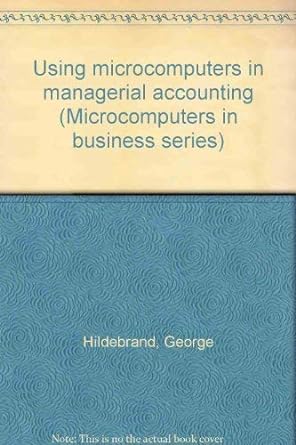Question
Section A (50 marks) Mrs Janet Smith, CFO of Yummy Foods, stared out the window of the company headquarters in Sandton. Yummy Foods was a
Section A (50 marks) Mrs Janet Smith, CFO of Yummy Foods, stared out the window of the company headquarters in Sandton. Yummy Foods was a packaged goods company - it manufactured and distributed its own products and was South Africas largest food company. The companys financial statements for the current year ended 30 September 2018 had just been finalised, a grueling process involving a large finance function and the group auditors. It had been a challenging year for Yummy Foods. In March of 2018, a listeriosis outbreak started in Polokwane, resulting in the company suspending operations of its Meat Products division in the second half of the financial year. There had been significant poor publicity relating to the outbreak. At the same time, South Africa entered a technical recession during the second quarter of 2018, while the Rand weakened significantly against major currencies. Yummy Foods, as a manufacturer and packager of foodstuffs, was, like its competitors, affected by input costs required for manufacture and packaging of goods. Now that the financial statements had been finalised, the next step was for Smith to make sense of the information for users of the financial statements, including shareholders. Mostly, Smith was looking to make sense of the numbers for herself. She wanted to better understand the companys financial health, particularly its profitability, efficiency and liquidity, given the significant events that had happened. Despite those events, she believed that Yummy Foods was still a financially sound company. But she needed more analysis to understand if this was still the case. You had recently been employed within the finance function of Yummy Foods as a strategic financial analyst. Smith has heard of your ability to not just read the numbers, but interpret them and communicate their message. She has also heard that you recently completed your MBA at the JBS, where you had successfully completed an accounting & financial management module which emphasised the language of accounting. P a g e 4 | 10 Mrs Smith has asked you to draft a report to her, to address her areas of interest and concern, and to analyse the financial health of Yummy Foods. She has provided you with the following summarised financial statement information for Yummy Foods for the past two financial years ended 30 September 2018 and 30 September 2017, respectively: Income Statement Yummy Foods R'm FY18 FY17 Revenue 28,400 31,298 Cost of Sales 19,210 20,856 Gross profit 9,190 10,442 Operating Expenses 6,090 5,952 Operating profit 3,100 4,490 Finance cost 30 200 Net profit before tax 3,070 4,290 Taxation 837 1,234 Net profit after tax 2,233 3,056 P a g e 5 | 10 Yummy Foods Balance Sheet as at 30 September 2018 and 2017 R'm FY18 FY17 Non-current assets 4,600 4,588 Property, plant and equipment 4,600 4,588 Current assets 10,881 10,638 Inventory 5,100 4,812 Trade receivables 4,200 4,605 Cash 1,581 1,221 Total assets 15,481 15,227 Non-current liabilities 991 791 Long-term borrowings 991 791 Current liabilities 3,800 4,300 Trade payables 3,800 4,300 Total liabilities 4,791 5,091 Total Equity (consisting of ordinary share capital and reserves 10,690 10,136 1) Instructions for Section A Draft a report to Mrs Smith which assesses the financial health of Yummy Foods, for its 2018 financial year, based on the information provided. Make sure to pay close attention to the areas of interest or concern identified by Mrs Smith. You may make use of comparative period amounts. Note: Your analysis must, at a minimum, include financial ratio analysis using profitability, efficiency, and liquidity ratios P a g e 6 | 10 It is strongly recommended that you also include other principles and tools covered in the JBS Accounting & Financial Management module in your analysis Assume that all Revenue disclosed in the information above, consists of sales on credit Show all your calculations, including formulas used Where you do not have a prior period amount to calculate an average, assume the current period amount or closing balance is the average figure for the period. You must state where you have done so. State any assumptions that you make
Step by Step Solution
There are 3 Steps involved in it
Step: 1

Get Instant Access to Expert-Tailored Solutions
See step-by-step solutions with expert insights and AI powered tools for academic success
Step: 2

Step: 3

Ace Your Homework with AI
Get the answers you need in no time with our AI-driven, step-by-step assistance
Get Started


